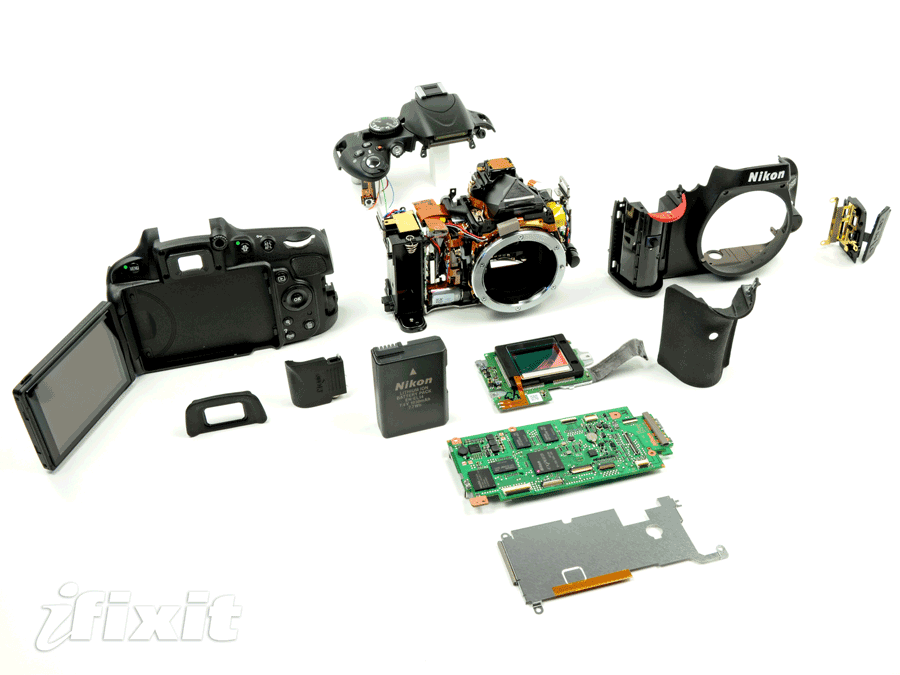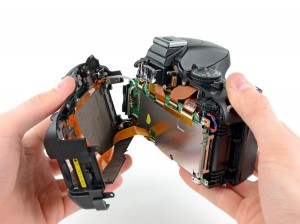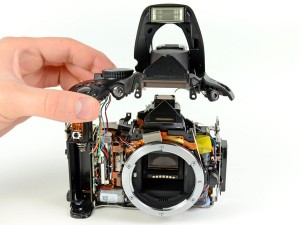While waiting for the announcement of the Nikon AF-S 50mm f/1.8G lens which is less than 12 hours away, take a look at this Nikon D5100 teardown performed by Ifixit:
Teardown highlights:
- The D5100 utilizes a 16.2 megapixel DX format CMOS sensor to capture images. This sensor has the same specs of the sensor used by the Nikon D7000.
- Chipworks reports that each pixel on the sensor is 4.8 µm wide. That’s about half the diameter of a red blood cell.
- The sensor has a special glass cover that turns red when viewed at an angle, but is completely transparent when viewed head-on. Neat!
- Unlike other recent teardowns, the battery can be easily replaced by opening the compartment with your thumbnail.
- The 7.4 V 1030 mAh EN-EL14 Li-ion battery is used by the D5100, D3100, and the COOLPIX P700. Sadly, it’s not compatible with other cameras in the Nikon lineup, such as the D90 and D7000.
- Definitely make sure to discharge the large-and-in-charge 330µF flash capacitor if you attempt any repairs on the D5100. Otherwise you risk accidentally killing your camera.
- The camera has roughly 4 billion screws holding it together. We had to skip a lot of the “unscrewing this screw” pictures in order to keep the teardown interesting, since we took out 37 of them to get to the teardown layout shot.
- You can easily access the motherboard by removing the rear cover. You just need to remove twenty-ish #00 Phillips screws, disconnect 9 ribbon cables, and desolder a few wires…
- The D5100 contains a lot of the same chips found in the Nikon D7000. Key players include:
- Nikon EXPEED 2 EI-154 1051 Z05 image processor
- Samsung K4T1G164QF-BCE7 1Gb DDR2-800 SDRAM (total of 3 Gb = 375 MB)
- MXIC MX29GL128EHXFI-90G 128 Mb parallel flash memory
- Toshiba TMP19A44FEXBG low-power microcontroller
- Nikon EI-155 M4L1BA00 00151044
- Nikon NHHS-2 049M8
- There’s a light blue pad wedged between the bottom of the flash capacitor and the bottom camera frame. It conducts heat away from the capacitor to cool it down during flash-intensive shooting.
- The top cover is a feat of engineering by itself. Within its walls are contained: Main control wheel, shutter/aperture control wheel, live view lever, On/Off switch, “info” button, record button, shutter button, exposure compensation button, IR sensor, AF lamp, flash, flash control circuitry, flash actuator, and the microphone.
- The flash is actuated by a linear solenoid that pushes on a lever to release the spring-loaded flash — either automatically if the sensor detects a low-light situation, or when the flash button is depressed.







